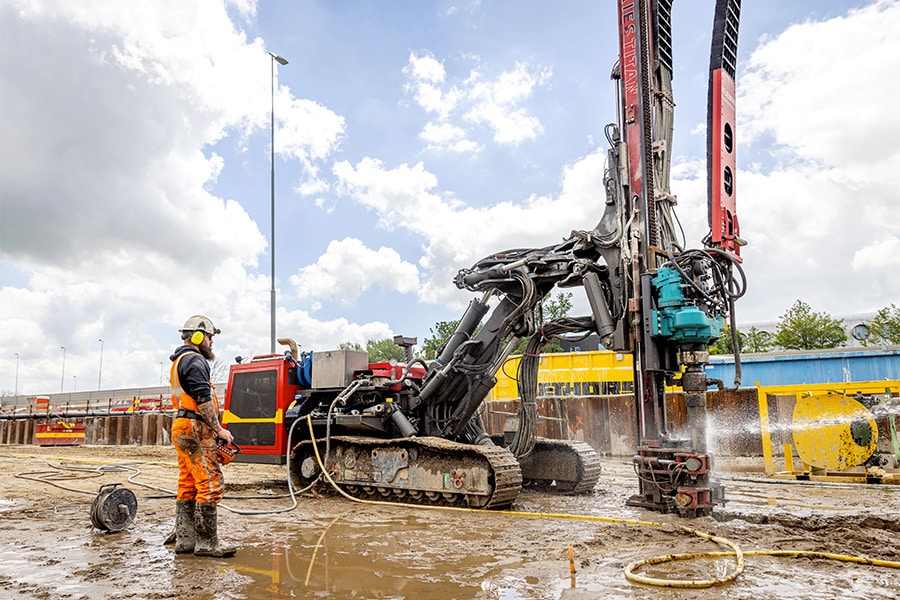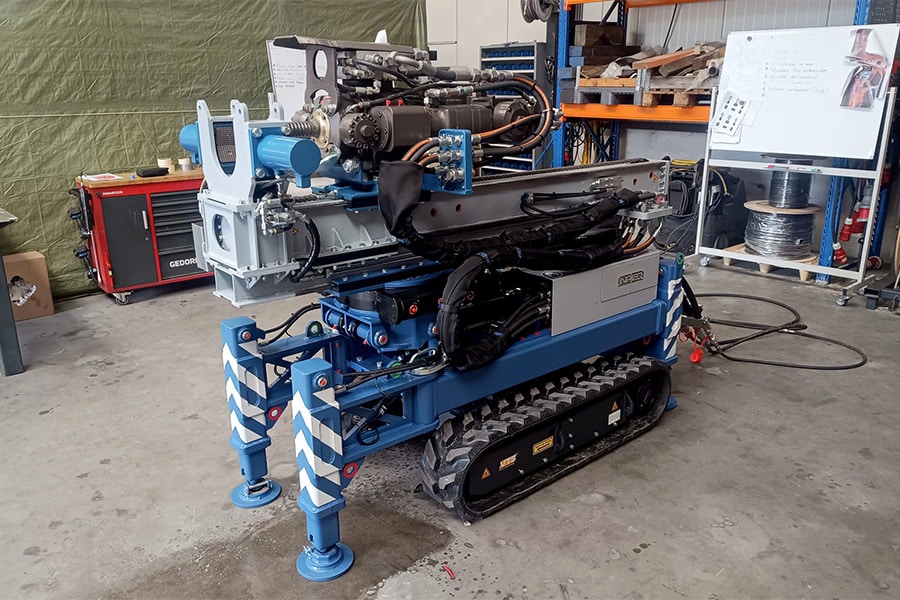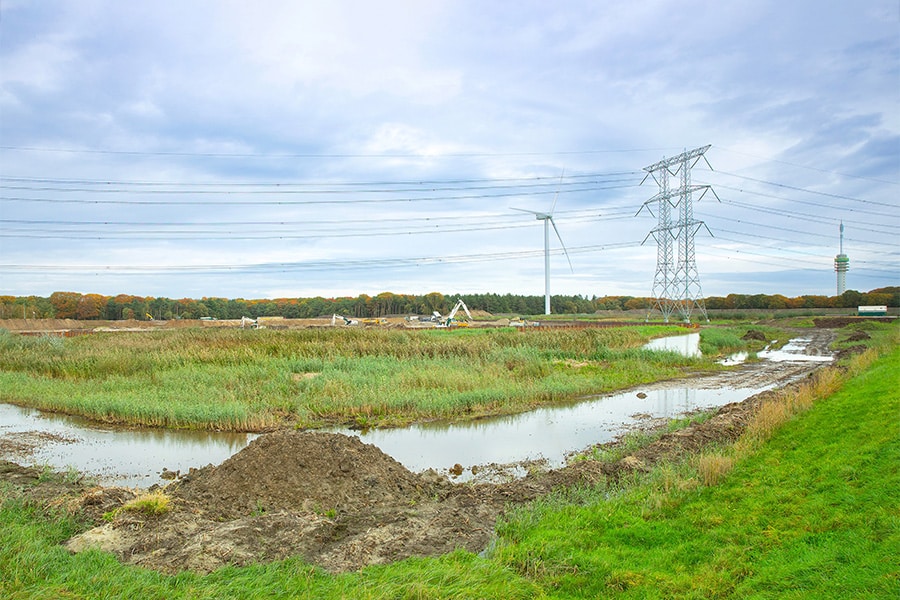
TenneT builds new 380 kV high-voltage substation near Tilburg
North of the De Dommel Water Board's water storage facility near Tilburg, TenneT is building a new 380 kV high-voltage substation. It is doing this in partnership with Croonwolter&Dros-Mobilis, Antea Group and Strukton. The high-voltage substation is an important link in the regional and national energy transition. This project involves a great deal. In particular, the location, the various interests of the parties involved and the surrounding nature require the utmost care. Project manager Roel Jannink and communications consultant Harriët van der Weele, both employed by TenneT, explain exactly how this works.
"We are facing the biggest rebuild of our energy infrastructure of all time," Harriet says. "The electricity grid in our country is full. Simply because we are all consuming more and more electricity, because we want to get rid of coal and gas faster. And so capacity expansion is badly needed. North Brabant was one of the first regions in the Netherlands where we had to deal with so-called grid congestion, or a full electricity grid. You can easily compare this to a traffic jam on the highway. If too many cars want to get on the road at the same time, a traffic jam quickly forms. Our current power grid was once built for one-way traffic; from power plants to end users. Today, however, much power is also supplied back by wind and solar farms, for example. In fact, the old one-way road needs to be made suitable for two-way traffic. Another factor is that energy from wind and solar is more erratic; we have to deal with peaks and troughs much more. We want to generate and use more sustainable power, but are thus now being held back by the limitations of the current electricity grid. At TenneT we are therefore working hard to make our 'electricity highway' robust enough to cope with the demand and supply of electricity in the coming decades. The big challenge here is that we are adapting the infrastructure while keeping the lights on."
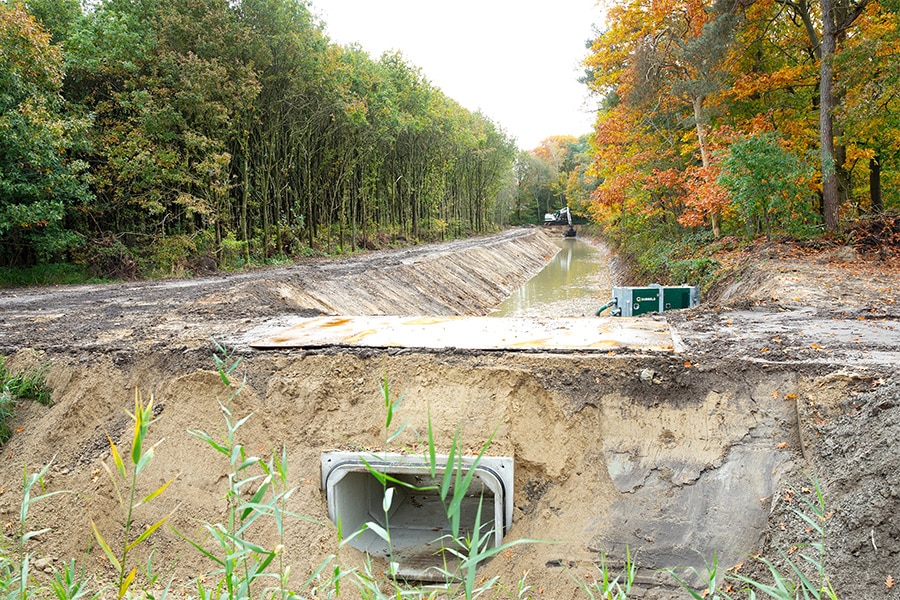
25,000 kilometers of high-voltage connections
Elaborating on Harriet's comparison to the highway, TenneT, as grid operator, is responsible for the highways; the national 380, 220, 150 and 110 kilovolt high-voltage grid. This is some 25,000 kilometers of high-voltage lines in the Netherlands, but also partly in Germany. TenneT transmits electricity from the source (including nuclear, coal and gas power plants, solar panels, wind farms) via these highways to the provincial and village highways of the regional grid operators; the medium and low voltage grids. Using transformers, the high voltage in power stations is converted to a lower voltage that the regional grid operators transport to households and businesses. Harriët: "Quite simply, we ensure that electricity is always and everywhere available with a security of supply of more than 99.99%."
Tilburg as a piece of the energy puzzle
So much for TenneT's job and the need for new high-voltage substations in the Netherlands. But what role does the new 380,000 volt (380 kV) substation at Tilburg play in this whole story? Roel: "Tilburg is like a piece in the energy puzzle of North Brabant and the Netherlands. First, it is needed to prevent current and future electricity supply bottlenecks in North Brabant. Second, it will be the terminus of a new 380 kV connection between Borssele and the national high-voltage grid. The connection near Borssele, South-West 380kV, will transmit power from production sites in Zeeland, Belgium and at sea to this new high-voltage substation. The high-voltage substation to the north of Tilburg will therefore soon provide space to connect the new connection to the national 380kV ring. That is not all, the Tilburg high-voltage substation will also be connected to the 150 kV electricity network via a transformer. This will be done via underground cables. This will create space on the underlying 150 kV electricity network, thus preventing urgent problems in the energy supply."
What came before
A long and careful process preceded the construction of the new high-voltage substation. Clients are the Ministries of Economic Affairs and of the Interior and Kingdom Relations. "There are also a lot of regional and local parties and agencies involved, such as the province of North Brabant, the municipality of Tilburg, De Dommel Water Board, Natuurmonumenten, Huis ter Heide, as well as companies, landowners and local residents," Roel said. "It is a huge and complex project involving many stakeholders. So a location is certainly not a matter of 'wet finger work' but a process of careful research, consultation and coordination. On average, this takes about eight years. In this case, the procedure started in 2017 and we were able to start preparing for construction last year. Ultimately, the site north of the water storage facility near Tilburg was chosen because it is near the current high-voltage grid, which ultimately makes it the most logical choice."
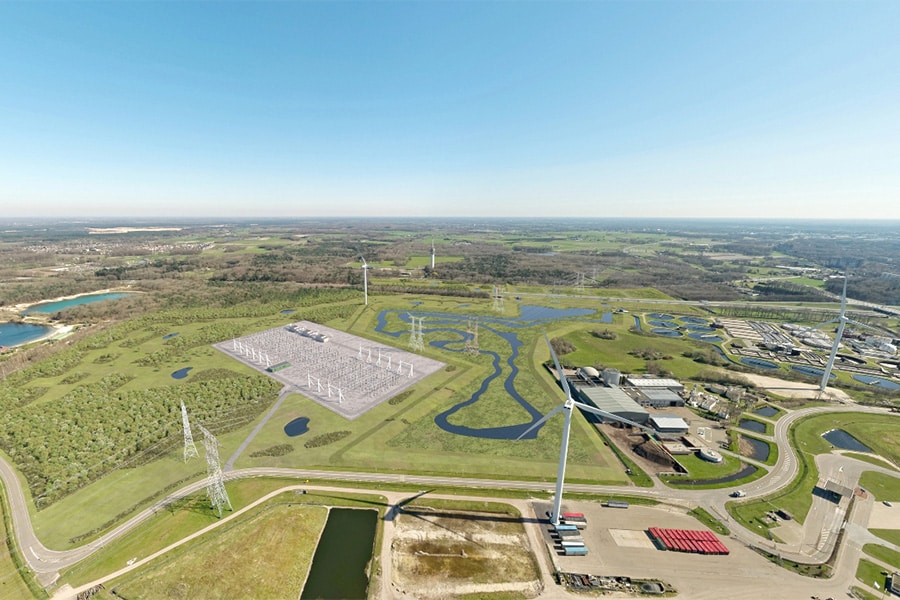
35 soccer fields
To give an idea of the size of the project: the total work site covers some 35 acres. Of this, about 6.5 hectares (13 soccer fields) is earmarked for the high-voltage substation itself, or as Roel calls it "the big group box" where power is distributed to the various users. "On these 6.5 acres we are building 3 transformers and 1 spare field for a fourth transformer. There will also be new lattice towers to connect the substation to the existing 380 kV connection. There will also be underground 150 kV cables from the new substation to the existing 150 kV Tilburg-Noord substation. This will allow us to connect the 380 kV grid with the 150 kV grid." Construction of the substation is in the hands of Cooperation Croonwolter&dros-Mobilis. Strukton Wegen & Beton prepared the entire 35-hectare site for construction and modified and partially relocated the current water storage facility. "And we engaged Antea Group's engineers for the entire preliminary process including design relocation water storage, (soil) surveys, analyses and planning. The mutual cooperation is going very well. That's nice, because that's also how you get the most efficient project result which is good for all parties."
Water storage relocated
That the location near the water storage was logical given its proximity to the existing high-voltage grid does not necessarily make it the simplest. What's more, the station will be partly on the spot where the water storage facility of the Dommel Water Board is now located. And so there also had to be a plan to relocate this water storage before construction started. Roel: "Yes, moving a water storage facility requires the necessary expertise. It also has quite an impact. In close consultation with the water board, the municipality of Tilburg and Natuurmomenten, among others, Antea Group arrived at a design that takes existing structures and landscape elements into account. By 2025, in accordance with this plan, the water storage will have been partially relocated to the west and east sides of the N261."
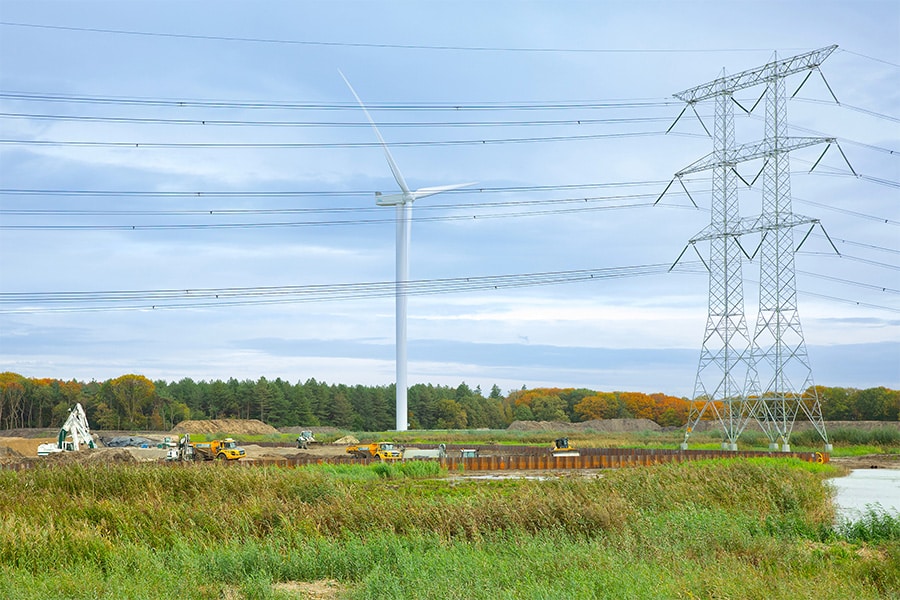
Landscape improvement
"Our high-voltage substations have an impact on the landscape, which is why we always compensate for tree felling, and if possible we go the extra mile," says Harriët. "So too at Tilburg. In terms of nature, this is a special project. Together with the municipality of Tilburg, Natuurmomenten and the Province of Noord-Brabant, among others, we are working on a connecting zone between people and animals. This concerns a recropassage, a combination between an eco passage and a bicycle tunnel. It connects Huis ter Heide and the Brand. The passage is intended, among other things, for the tree frog, roe deer and crested newt. Much has also been done for the badgers and bats that live there. To minimize disturbance to these animals, among other things, an artificial lodge has been constructed north of the station. For the bats, we created a migration route. A number of trees had to be cut down. New trees will eventually replace them, but we had to come up with something to help the bats. The trees that will soon be replanted have been temporarily placed in big bags so that we can easily move them. The construction required some trees to be cut down. Together with Natuurmomenten, we have seized this moment to give the landscape a more open character, so that certain protected species can benefit again. Looking specifically at the construction work itself, we used low-vibration piling methods instead of drilling. During construction, lighting is also directed at the site and not at the forest. We also apply sight-proofing materials and construction curtains to avoid possible disturbance to the animals. All in all, together with nature and environmental organizations involved, we are thinking in detail how we can strengthen nature."
Timeline
Over the past year, hard work has been done to prepare the land for construction and is underway to relocate the water storage facility. Currently, the Tilburg high-voltage substation itself is being built. If all goes according to plan, the new 380 kV high-voltage substation will be commissioned in the fall of 2026. If you want to know how things stand now, check out the virtual project atlas South West 380 kV East on TenneT's website. This project atlas provides a bird's eye view of the current and new situation.


